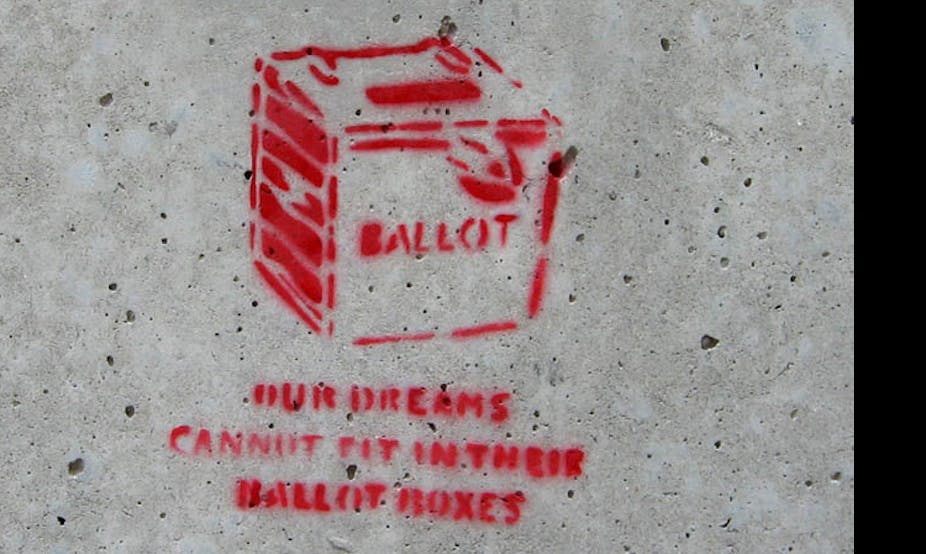Political parties dominate Australian politics. Their centrality is often accompanied by cynicism about their role and purposes.
The perception often is that the principal role of political parties is to compete for power with self-interest their guiding compass.
This image can frequently come together with a view that political parties, engaged as they are in competitive struggles, should be subject to the barest of regulation.
After all, electoral contests are a primary means of channelling political party behaviour.
There is, however, an alternative to this stark, free-market model of self-interested political parties: one that sees them as movements performing vital democratic functions (including but extending beyond their role in elections) and as organisations that are governed by both principle and pragmatism.
The observation that political parties are vehicles to gain political power is true, but only in part. What it obscures are the various democratic functions that parties ideally perform.
The functions of parties
Foremost, political parties have representative functions, that is, they aim to reflect public opinion. They perform an electoral function whereby political parties, in their efforts to secure voter support, appeal to the public.
They also have a participatory function as they offer a vehicle for political participation through membership, meetings and engagement in the development of party policy.
Parties also perform an agenda-setting function in shaping the terms and content of political debates.
Major political parties also perform a governance function: they determine the pool of people who govern through their recruitment and pre-selection processes. And they also participate in the act of governing through helping make, and scrutinise, both laws and executive decisions.
Which brings us to the two hot topics of debate about political parties now.
Party funding
The first relates to party funding. Australia has long had the most laissez-faire political finance system in the English-speaking democratic world, much less regulated than even America’s.
Last year, however, laws were adopted in New South Wales that imposed caps on political donations and spending and significantly increased public funding of political parties. This year, Queensland adopted similar measures.
The debate is also intensifying at the federal level, with the agreements the ALP government struck with both the Independents and the Greens requiring an inquiry into the regulation of political funding. The government also currently has a bill that seeks to enhance the transparency of such funding.
The fundamental question here is how should political parties be funded? The answer – at least in part – is that they should be funded in a way that advances their democratic functions.
Although vague, this suggests firstly that details of political funding should be fully disclosed: a key democratic principle is that of transparency.
It also suggests that public funding of political parties can be justified (and that political parties need not be solely reliant on private money). The crucial question is not whether there should be public funding, but what kind.
Limiting donations and spending
What about limits on political donations and spending? Large political donations potentially distort the performance of party functions by biasing them towards wealthy donors and lobby groups.
This risk provides a compelling argument for caps on political donations. It also provides a rationale for spending limits.
Such spending drives unsavoury fund-raising practices. The supply of large political donations cannot be stemmed without dealing with the demand for electioneering funds.
Power to the members

Another concern is the decline in the connection of parties to broader society. As parties increasingly rely on corporate donations, their membership bases have withered. Parties are also sensitive to a belief that their candidate selections are manipulated by ruthless numbers-men.
Reformers are turning to America for inspiration. There, candidate selection belongs not to party members but to public primaries.
When a citizen registers to vote, she can publicly declare a party “affiliation”. Without having to pay membership dues, let alone associate with party members, the law allows her to select the party’s candidates, as well as vote in the general election.
In Australia, the ALP and Nationals have trialled primaries. The 2010 ALP Review recommended primaries count for 20% of all ALP pre-selections.
Experimentation is laudable, yet parties need to be careful, and clear about their aims. Whilst primaries might engage some electors outside the parties, borrowing this idea from America challenges our conception of parties and their democratic functions.
Primaries, on the face of it, sound terribly democratic. They open a fresh form of political participation to electors generally. But, it is a thin form of participation which may not revitalise parties: if the problem is membership decline, giving away a key membership right may only exacerbate the problem.
American parties are also weak: primaries render them mere labels under which individuals jostle for office with little common commitment.
This focus on the candidate inflates costs, skewing the system to wealthy and well-connected individuals (if the problem is branch stacking, how much easier will it be to flood a party-run primary). As a result, US parties do not set the agenda and their governance function is diluted, at a cost to electoral accountability.
At best, primaries here would be a way for parties to market themselves to casual supporters. Parties are jealous of groups like Get Up, with its huge e-mailing list. That online model works for fund-raising and petition drives, but it cannot generate a self-organising movement.

